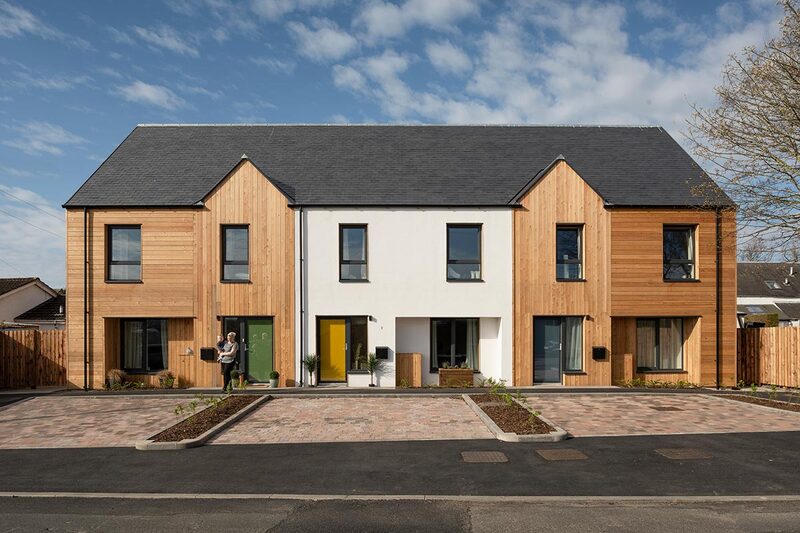Scotland’s Passivhaus-style standard could fall ‘significantly short’ of goals
Scotland’s proposed Passivhaus-style standard for new build homes could “fall significantly short” of its aspirations, experts have warned.

The Scottish government launched a consultation in July to determine the principles for a Scottish equivalent to the Passivhaus standard.
Alex Rowley, a Labour MSP, first proposed the policy in the Scottish parliament as a private members’ bill, but it was taken up by the government, which pledged to apply the standard to all new homes by the end of 2024.
Passivhaus homes are highly energy efficient and well ventilated, reducing the carbon footprint of residents and effectively eradicating fuel poverty.
However, since compliance and certification for the official standard are owned and run by a German body, the Passivhaus-Institut, Scottish ministers have promised to introduce their own equivalent standard rather than Passivhaus itself.
This opens the possibility that the Scottish standard could be less rigorous than the official one.
Responding to the consultation, Jon Bootland, chief executive of the Passivhaus Trust, the Passivhaus-Institut’s UK affiliate, said “what is being proposed could still fall significantly short of the intended aspirations”.
The trust said the consultation’s proposals for energy forecast modelling tools and targets were “not sufficient to achieve a genuine Passivhaus equivalent”.
Ministers are proposing that Scotland should adopt an as-yet-undeveloped ‘Scottish wrapper’ for the Home Energy Model (HEM) software developed in England for the forthcoming Future Homes Standard.
Mr Bootland said Scotland should initially adopt the Passivhaus planning package, which he called a “tried and tested” modelling and design tool, until the Scottish HEM wrapper can be shown to produce energy forecasts with the same accuracy.
He also called for ministers to use “absolute targets” based on heating demand, peak heating load and energy use intensity.
Currently, the consultation proposes relative ‘notional building’ energy targets, which Mr Bootland said “will not deliver the performance required to achieve Passivhaus-equivalent levels of comfort, indoor air quality and low energy bills”.
Mr Bootland said he was in favour of a stepped approach to implementation, with voluntary targets introduced in 2026 and mandatory targets in 2028.
This transition period would allow for “upskilling and training” once the industry had clarity on the exact policy requirements.
The consultation set out its goals for the Scottish standard: to improve energy performance and ventilation standards for new buildings and to improve the design and construction process to give greater assurance that compliance, and therefore the performance sought, is delivered in practice.
“In this context, ‘equivalent’ should not necessarily mean that: we adopt and implement Passivhaus for all new development; [or] our standards must consistently achieve built outcomes at least as good as Passivhaus,” it said.
In the foreword to the consultation, Paul McLennan, the Scottish housing minister, wrote: “We must introduce a step change in the way we design and construct our new buildings so we can have greater assurance that compliance with our standards is achieved in practice.”
He added: “I am aware of the current economic climate and that this government has acknowledged we are in a housing emergency. Which is why it is essential we identify practical solutions, both for when we introduce further change and the level of improvement across the whole of Scotland for every new building constructed.
“Changes that we introduce must bring with them a clear benefit, be deliverable at scale and be balanced against the broader needs of everyone in Scotland.”
The consultation document pointed out the difference in application of a voluntary standard like Passivhaus and mandatory regulation.
Passivhaus “has relative freedom in defining outcomes – targets and the manner in which they are to be achieved”, it read. As a voluntary standard “it does not have to demonstrate that it is both necessary and the best way of achieving a given outcome, taking into account economic and broader societal outcomes at a national level”.
“For this reason, ‘equivalent’ must mean that which can be interrogated, learned from and implemented within the context of national minimum standards to deliver similar goals,” it added.
The current Scottish government consultation runs until 23 October. Further details of proposed new standards and performance targets will be set out in another consultation in summer 2025.
Sign up for our Scotland newsletter
Already have an account? Click here to manage your newsletters











